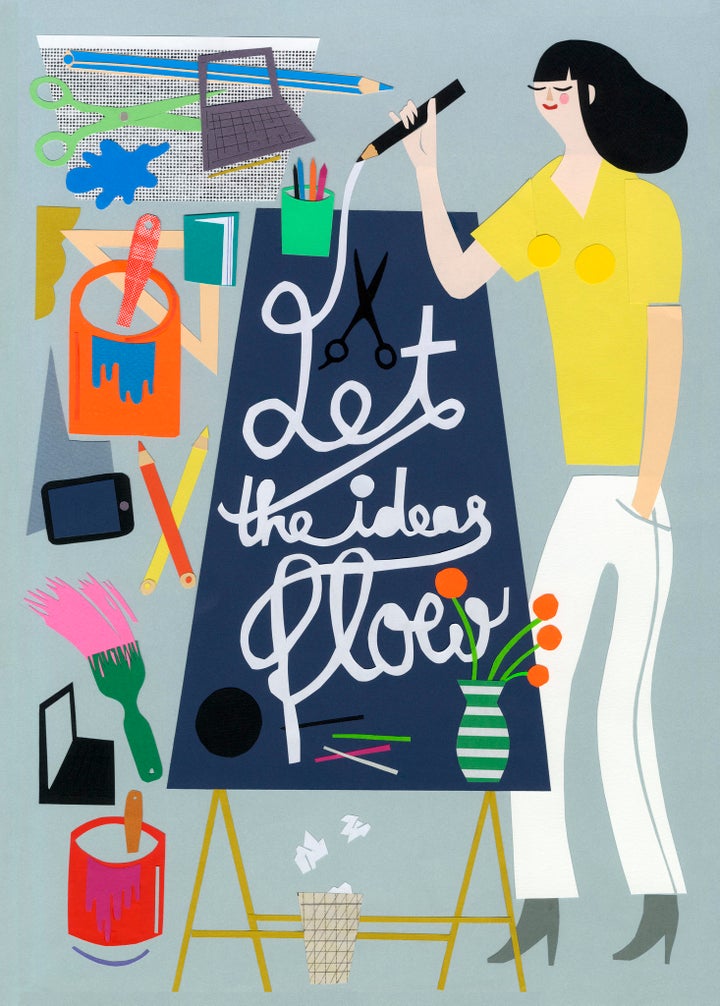
The next time you're blessed with that familiar, overwhelming sensation of stress -- when your anxieties turn from passing sensations in the brain to rude house guests overstaying their welcome -- I highly recommend breaking out your construction paper, model clay, glitter glue, feathers and pipe cleaners.
"I'm not an artist!" you might protest, recalling the ambivalent grin your parents flashed while hanging your elementary school masterpiece on the refrigerator all those years ago. But, no matter. Honestly, it does not matter. Science says so.
More specifically, Girija Kaimal, assistant professor of creative arts therapies at Drexel University, says so. Kaimal recently led a study examining the effects of making art on stress-related hormones in your body.
The results, published in Art Therapy: Journal of the American Art Therapy Association, titled "Reduction of Cortisol Levels and Participants’ Responses Following Art Making," found that 45 minutes of creative activity significantly lessens stress in the body, regardless of artistic experience or talent.
"It was surprising, and it also wasn’t," Kaimal explained to Drexel Now. "It wasn’t surprising because that’s the core idea in art therapy: Everyone is creative and can be expressive in the visual arts when working in a supportive setting. That said, I did expect that perhaps the effects would be stronger for those with prior experience."
The study, co-authored by Kendra Ray, a doctoral student under Kaimal, and Juan Muniz, an assistant teaching professor in the department of nutrition sciences, invited 39 adults, ranging from 18 to 59 years old, to participate. Markers, paper, clay and collage materials were amongst the tools offered up to the participants, who were instructed to create whatever they so pleased over the course of 45 minutes, with no further directives. An art therapist was on site in case the participants had any questions or concerns.
Before the crafting commenced, researchers recorded the cortisol levels of the study participants. Cortisol is a biological indicator correlated to stress -- the higher your cortisol level is, the more stressed out you probably are. The participants also described their artistic experience prior to the study. Just under half described their art background as "limited."
After the very scientific craft party, researchers again tested the participants' cortisol levels. Approximately 75 percent of the participants displayed lower levels of cortisol, indicating lower stress levels. Although the exact amount of cortisol varied slightly amongst the participators, these levels did not correspond to their prior experience in the arts. Nor did they correspond with the artistic media the participants opted to work with, as Kaimal briefly suspected.
There was, however, a consistent correlation between younger participants and lowered cortisol levels, indicating that young people in particular could benefit greatly from the de-stressing powers of art. "I think one reason might be that younger people are developmentally still figuring out ways to deal with stress and challenges, while older individuals -- just from having lived life and being older -- might have more strategies to problem-solve and manage stress more effectively," Kaimal hypothesized.
In the future, Kaimal hopes to repeat the admittedly small study and test for additional biomarkers such as alpha amylase and oxytocin to get a fuller picture of the participants' inner states before and after therapeutic art-making.

